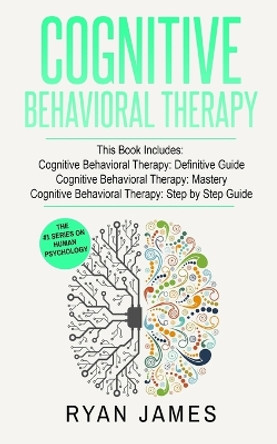Description
Richly illustrated with clinical material, this book presents specific techniques for working with multisensory imagery in cognitive-behavioral therapy (CBT). Leading researcher-clinician Lusia Stopa explores how mental images--similarly to verbal cognitions--can trigger distress and drive maladaptive behavior. She guides the therapist to assess imagery and help clients to recognize and explore it. A range of interventions are described, including imaginal exposure, imaginal reliving, rescripting, working with self-images, and using positive imagery to improve well-being. Extensive sample dialogues and a chapter-length case example demonstrate the techniques in action with clients with a range of frequently encountered psychological problems.
About the Author
Lusia Stopa, DPhil, is Emeritus Professor of Clinical Psychology at the University of Southampton, United Kingdom. Dr. Stopa established Southampton as a center of excellence for cognitive therapy training and has directed both cognitive therapy and clinical psychology programs in the School of Psychology. She teaches and supervises mental health practitioners in evidence-based treatments, with a particular emphasis on imagery, and has a private cognitive therapy practice. She studied English literature before psychology and has always been interested in the narratives people create about their lives. Her innovative research focuses on how mental images can represent the self, and she has published widely on imagery and the self in social anxiety and other disorders. She is also examining how imagery can promote recovery and is investigating mechanisms to explain the effectiveness of imagery rescripting. In recognition of her contributions to the field of cognitive therapy, Dr. Stopa was invited to become a scholar at the Beck Institute for Cognitive Behavior Therapy in 2015.
Reviews
"Reading this lovely, practical book will help practitioners improve their treatment, even if they are already proficient in eliciting and responding to clients' images....The book is full of detailed clinical examples that not only illustrate specific imagery techniques but also describe how therapists can build trust and collaboration, which enable them to foster positive emotions and reinforce positive views of the self and others, as well as target negative and fearful images....I think you'll find that learning the theoretical basis for working with imagery and the specific techniques to implement will make your treatment much more creative, effective, and rewarding."--from the Foreword by Judith S. Beck, PhD, President, Beck Institute for Cognitive Behavior Therapy
"This is an important book that will have a significant influence on CBT. Stopa achieves an unusual balance of scholarly sophistication and clinical relevance, demonstrating creative, intuitive ways to use imagery. I know that I will be using the ideas and examples in this book in my clinical work, and I will encourage my trainees to do the same. This book gives therapists tools and insights to reach the deep emotional issues that clients struggle with. A 'must read!'"--Robert L. Leahy, PhD, Department of Psychiatry, Weill Cornell Medical College; Director, American Institute for Cognitive Therapy
"This gem of a book introduces therapists to the full range of evidence-based imagery techniques used in CBT. As an expert therapist who has been at the forefront of research and clinical innovation, Stopa provides essential detail on implementation. Her experience as a CBT trainer ensures that the book will enhance the practice of clinicians at all levels. Via case studies, readers learn about potential challenges in implementing imagery techniques, along with proven ways to address them. Imagery-based interventions have the potential to really help clients recover--this book provides a roadmap for therapists."--Colette Hirsch, DClinPsy, PhD, Institute of Psychiatry, Psychology, and Neuroscience, King's College London, United Kingdom
"Mental imagery is a part of everyday human life that can be harnessed to facilitate psychotherapeutic change. From an internationally recognized expert who is a pioneer in applying imagery in CBT, this manual includes a rich array of techniques that can be useful across many clinical disorders. The material is peppered with interesting case examples, and careful attention is paid to the nuances of clinical delivery and potential rough spots. This book will be a go-to source for anyone who wants to enrich their clinical practice by incorporating the power of imagery, and it will be a useful addition in graduate-level coursework and clinical training. The techniques can be used alone or in combination with other interventions, and can be applied well beyond CBT."--Adele M. Hayes, PhD, Department of Psychological and Brain Sciences, University of Delaware
"A cutting-edge, practical, and easy-to-digest guide. In a highly accessible manner, Stopa weaves compelling evidence-based principles with case material, clinical expertise, and personal experience to create a wonderful addition to the literature that is a valuable resource for novice and seasoned practitioners alike. I strongly recommend this book for any clinician seeking to understand why and how to incorporate mental imagery into psychotherapy. Stopa demonstrates how imagery-based interventions may help to boost treatment effects for clients with a range of mental health problems."--David A. Moscovitch, PhD, CPsych, Department of Psychology, University of Waterloo, Ontario, Canada-
Book Information
ISBN 9781462547289
Author Lusia Stopa
Format Hardback
Page Count 316
Imprint Guilford Press
Publisher Guilford Publications
Weight(grams) 580g









